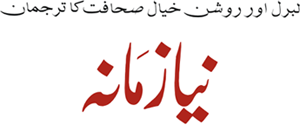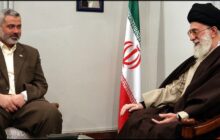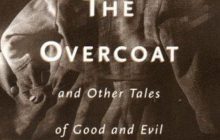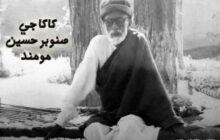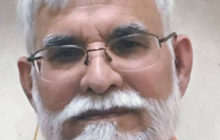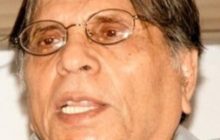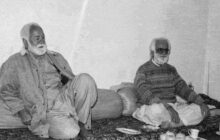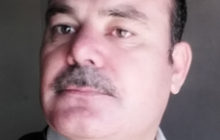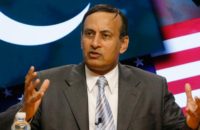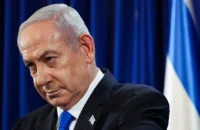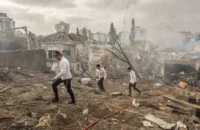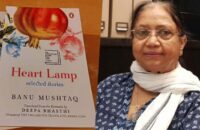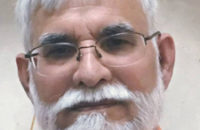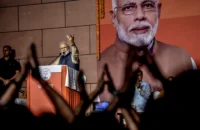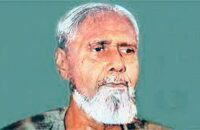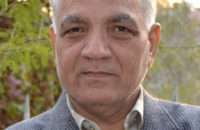By Steven Butler
July 16 was just another night for Najam Sethi on his show at Pakistan’s 24 News BD, where the sometimes jocular veteran journalist sits and analyzes the day’s news, answering questions interspersed with video clips. Yet as he got to the last item on the show — nationwide demonstrations by journalists against censorship and layoffs — management suddenly pulled the plug. Could it have been a secret, ironic message validating the journalists’ claims? On Twitter, Sethi blamed the “Invisible Censor Board.”
Pakistan’s “Invisible Censor Board” has gone into overdrive lately — blocking news broadcasts, forcing journalists off social media, banning opposition leaders from television, running fake viral campaigns threatening journalists. Of course, Pakistan has no Invisible Censor Board.
What it does have is an unusual confluence of political forces, which goes a long way to explaining this harsh new crackdown on the press. “In the past, government was in conflict with intelligence services and the military,” says Zaffar Abbas, Dawn newspaper editor, who is recipient the Committee to Protect Journalists’ 2019 Gwen Ifill Press Freedom Award. “But the government is now almost on the same page on their critical view of the media. The army is just doing what they always do.”
The government and military now share the view that media should support the Pakistani state, not criticize it. As a result, no one’s left to put the brakes on measures, legal or extralegal, taken against journalists who report news authorities don’t like. The military’s in charge, without a coup.
Much of the effort is hardly invisible. On Tuesday, the official Twitter account of the ruling party, the Pakistan Tehreek-e-Insaf — led by Prime Minister Imran Khan, who met President Trump on Monday — issued a series of tweets under the hashtag #JournalismNotAgenda warning that journalists who criticized the government might be committing treason. “Expressing Enemy’s Stance is Not Freedom of speech but treason against its people,” said one tweet card. (Meanwhile, Khan complained about the Pakistani media to Trump during their meeting in the White House. Trump sympathized.)
It’s not an idle threat. In September last year, Dawn newspaper columnist Cyril Almeida was charged in a treason case for an interview he conducted with former prime minister Nawaz Sharif, in which Sharif — not Almeida — raised questions about Pakistan’s involvement in the 2008 Mumbai terrorist attacks, where more than 170 people were killed. (That Pakistan was behind the attack is India’s stance, not Pakistan’s, at least officially.)
This month, another Twitter campaign, #ArrestAntiPakJournalists, went “viral,” with photographs of prominent critical journalists, but an analysis by the site Digital Rights Monitor concluded it was not exactly an organic trend. Instead, says Asad Baig, who heads the organization that manages the site, it was manipulated and engineered, with thousands of retweets from sites associated with the ruling party. “All this operation could be run by 10 to 15 people from a small apartment anywhere in the world,” he says.
Sharif is in jail now on corruption charges. An investigative journalist who probed the integrity of evidence in the case and the military’s involvement was beaten nearly to death in October 2017. Joining Sharif in jail is former president Asif Ali Zardari and former prime minister Shahid Khaqan Abbasi, who was imprisoned last week on a 20-year-old corruption case. Opposition leader Maryam Nawaz, Sharif’s daughter, is virtually banned from the media. Three TV stations were shut down in most of the country after they aired a live news conference in which she presented video evidence allegedly showing that the judge who sentenced her father was blackmailed. He was subsequently removed from his position by the Islamabad High Court.
How does all this happen? “They now have a wonderful mechanism, whereby the military intelligence agency just calls up the cable operators in every part of the country and tells them to take such-and-such channel off the air,” says Sethi. The same is true for calls directly to media owners, who then put pressure on journalists to shut down social media accounts, which have been an outlet for news and views the newspapers won’t publish. Indeed, just hours before Khan arrived in Washington, Pakistan’s most popular news channel, Geo, which has a history of run-ins with the military, was forced off the air in many parts of the country, without notice or explanation.
Hamid Mir, a prominent news broadcaster who has two bullets in him from an earlier attack, says the steep downturn of Pakistan’s economy, including high inflation and an International Monetary Fund bailout package, has created misery that the political opposition is getting ready to exploit with a planned “black day” of mass rallies on Thursday. “Imran Khan is feeling threatened,” says Mir. “If a lot people come on the road, he will face the same situation he created against Nawaz Sharif in 2014 [when he staged demonstrations in Islamabad]. Free media was the main source of his strength at that time.” Now, Khan fears media could turn against him.
In the meantime, independent media is struggling to survive. Dawn, one of the strongest independent voices in Pakistan, has faced forced disruptions to circulation, some still in effect, says Abbas. Government has cut advertising, and private advertising has nearly collapsed amid the economic downturn. Everyone at Dawn took pay cuts of 25 to 35 percent to avoid layoffs.
The U.S. government wants to work with Pakistan — to fight terrorism and its financing, to seek peace in Afghanistan, to avoid war with India. American officials who meet with Khan and his aides should remember that a free press has an important part to play in keeping the government and the military honest, even aside from its essential role as a pillar of democracy.
Steven Butler is the Asia program coordinator at the Committee to Protect Journalists.
